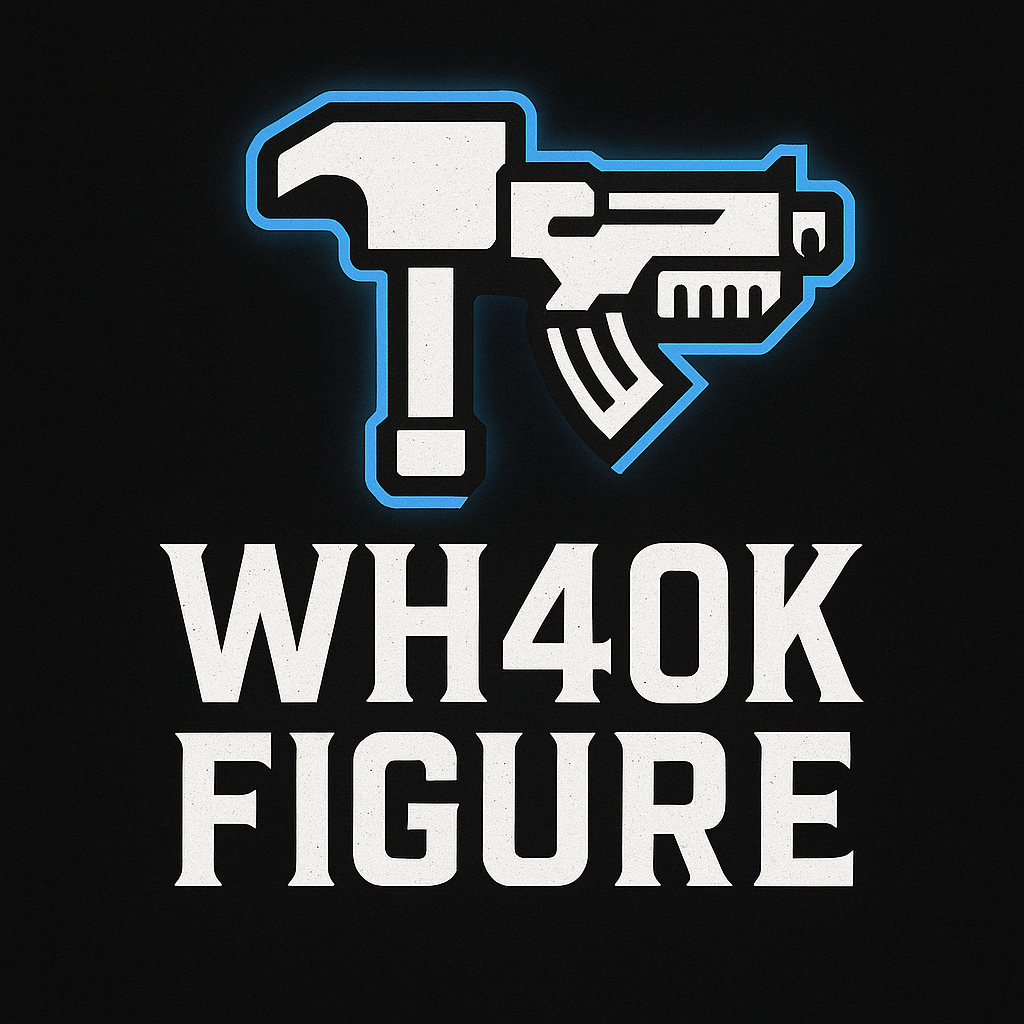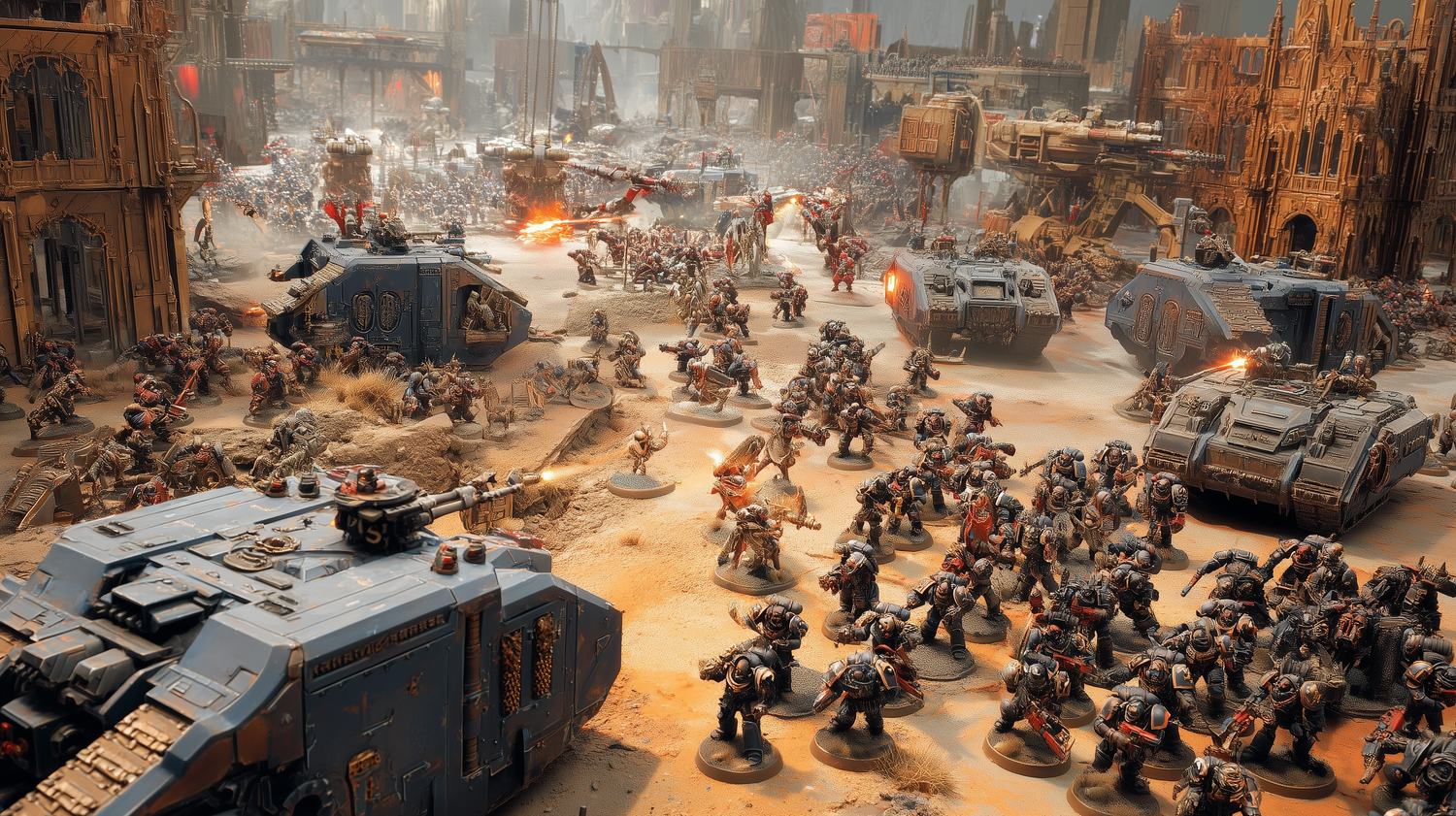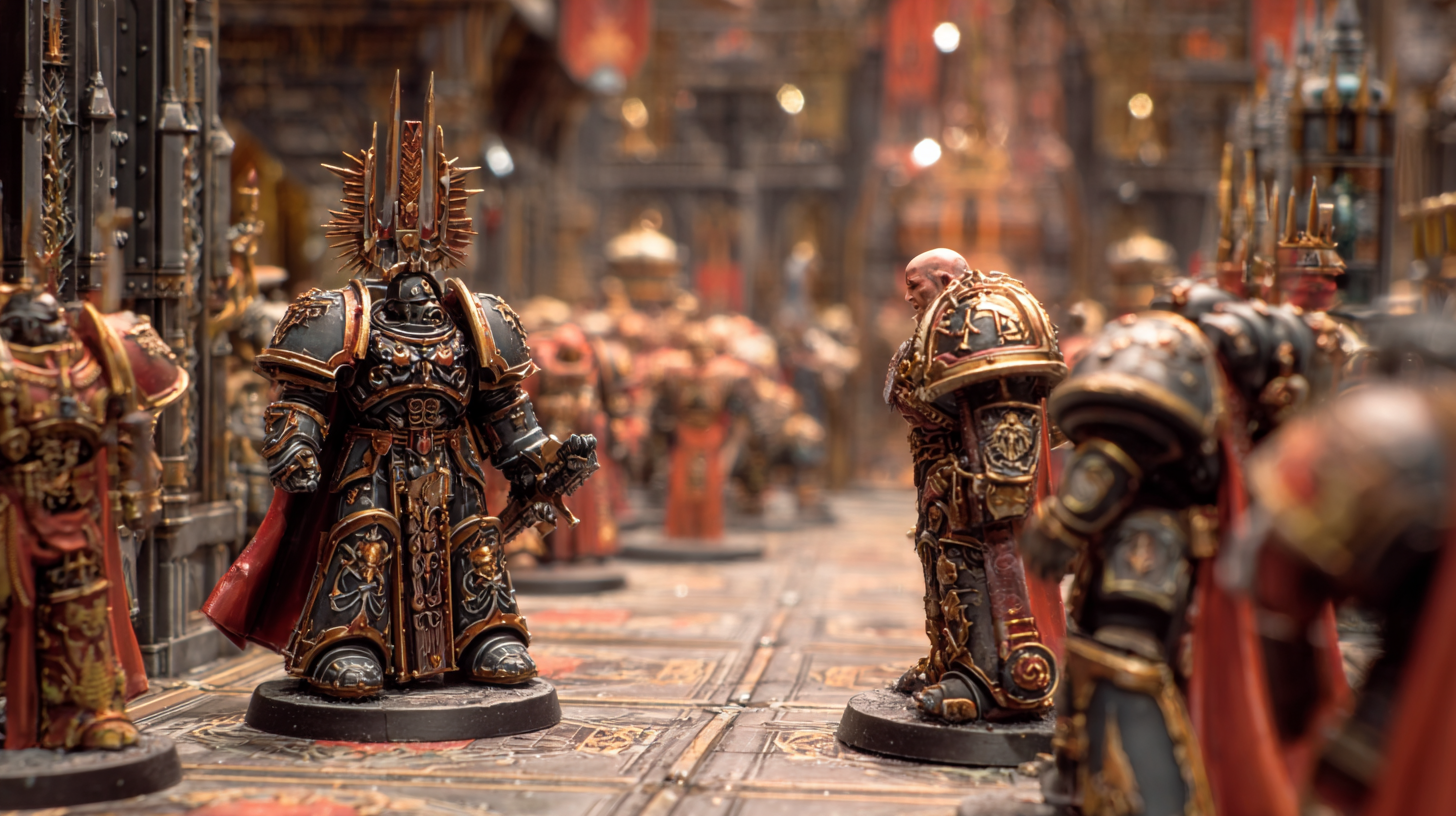So, you've assembled your first miniatures, marveled at the vast, grimdark lore, and now you're ready to command your army on the field of battle. Welcome to the core of the Warhammer 40,000 experience: the game itself. At first glance, the thick rulebooks and complex datasheets can seem intimidating, but the fundamentals of commanding your forces are straightforward, logical, and incredibly rewarding.
This guide will walk you through the essential steps of playing a game of Warhammer 40,000, from preparing for war to achieving victory. We'll break down the turn structure, explain the core mechanics with simple examples, and demystify the key concepts you need to know to make your first game a blast.
Part 1: The Preparation for War
Before the first shot is fired, every battle requires preparation. This pre-game sequence ensures that both players start on a level playing field.
What You Need to Play
To play a game, each player needs a few key items:
-
An Army: A collection of assembled Warhammer 40,000 miniatures.
-
A Tape Measure: Marked in inches, as all distances in the game are measured.
-
Dice: A handful of standard six-sided dice (often called D6).
-
The Rules: The core rules for Warhammer 40,000 are available for free on the Warhammer Community website.
-
Datasheets: Every unit in your army has a datasheet that lists its stats, weapons, and special abilities. These are also available for free online.
1. Muster Your Army
First, you and your opponent must agree on a battle size. This is determined by a "points limit." Every unit and weapon option has a points value that reflects its power on the battlefield. A small introductory game is typically a Combat Patrol (around 500 points), while a standard-sized game is Strike Force (2,000 points).
For your first few games, the Combat Patrol format is highly recommended. It uses the specific, pre-set contents of a Combat Patrol box, with simplified rules designed for fast, balanced games right out of the box.
If you're building your own army list, you'll select units from your faction, ensuring their total points cost does not exceed the agreed-upon limit.
2. Determine the Mission
A game of Warhammer 40,000 is not just a deathmatch. Victory is achieved by scoring Victory Points (VP), which are earned by completing mission objectives. The mission will tell you:
-
The layout of the battlefield (deployment zones).
-
Where to place Objective Markers (key locations your armies will fight over).
-
The Primary Mission: A recurring objective, often focused on controlling those markers at the end of each turn or round.
-
How you'll determine Secondary Missions: These are tactical goals, like assassinating an enemy character or securing a specific area of the board, that grant additional VP.
3. Create the Battlefield & Deploy Forces
Once the mission is chosen, you'll set up the battlefield with terrain (hills, ruins, forests) which provides cover and blocks line of sight. Then, you and your opponent will take turns deploying your units within your designated deployment zones, as shown on the mission map. This is a crucial tactical step—will you place your heavy weapons on a vantage point, or hide your assault troops behind a ruin, ready to strike?
After both players have deployed, you'll roll off to see who takes the first turn.
Part 2: Understanding Your Units - The Datasheet
The heart of every unit is its datasheet. This is your command interface, telling you everything a unit can do. Let's break down the key stats for a hypothetical "Vindicator Space Marine":
-
M (Move): 6" - The distance in inches the model can move in the Movement Phase.
-
T (Toughness): 4 - How durable the model is. This is the number an opponent's weapon Strength is compared against.
-
SV (Save): 3+ - The result needed on a D6 to block an incoming attack. A 3+ means a roll of 3, 4, 5, or 6 is a success.
-
W (Wounds): 2 - How much damage the model can take before it is removed from play.
-
LD (Leadership): 6+ - How courageous the unit is. Used for Battle-shock tests.
-
OC (Objective Control): 2 - Represents the unit's ability to control an Objective Marker. To control an objective, you must have a higher total OC than your opponent on that marker.
The datasheet also lists the unit's weapons, each with its own profile (Range, Attacks, Strength, etc.), and any special abilities that give it a unique edge in battle.
Part 3: The Battle Round - How a Game is Played
A game of Warhammer 40,000 is played over a series of Battle Rounds (usually five). In each Battle Round, both players take one turn. A player's turn is broken down into five distinct Phases. You must complete each phase in order before moving to the next.
Here are the five phases of your turn:
1. The Command Phase
This is the strategic start of your turn.
-
Gain Command Points (CP): Both you and your opponent gain 1 CP. These are a resource used to activate powerful special abilities called Stratagems. Stratagems can do things like allow a unit to re-roll its misses for a turn, interrupt an opponent's turn to fight, or grant extra resilience.
-
Resolve Abilities: Some units have special abilities that take effect in this phase.
-
Battle-shock Tests: Any of your units that are "Below Half-strength" (i.e., have lost half their models or more) must take a Battle-shock test. You roll two D6 and if the result is less than the unit's Leadership (Ld) characteristic, they become Battle-shocked. A Battle-shocked unit has an Objective Control (OC) of 0 and cannot have Stratagems used on it for that round.
2. The Movement Phase
Positioning is key to victory. In this phase, you can move each of your units. You have three options for most units:
-
Remain Stationary: The unit does not move. This is useful for gaining accuracy with 'Heavy' weapons.
-
Normal Move: Move the unit up to its Move (M) characteristic in any direction. A unit cannot end its move within Engagement Range (1" horizontally) of an enemy model.
-
Advance: The unit makes a Normal Move, after which you roll a D6 and add the result to its move distance. This is great for covering ground quickly, but a unit that Advances cannot shoot or charge later in the turn (unless its weapons have the 'Assault' ability).
3. The Shooting Phase
Unleash a volley of fire! You may now select each of your eligible units, one by one, to shoot at the enemy. A unit is eligible to shoot as long as it didn't Advance (usually) or Fall Back this turn.
Example of a Shooting Attack:
Let's say your 5 Vindicator Space Marines are targeting a unit of 10 Ork Boyz.
-
1. Choose Targets: You declare that all 5 Marines are shooting their "Bolt Rifles" at the Ork Boyz unit, which is in range and visible.
-
2. Determine Attacks: The Bolt Rifle's datasheet says it has an Attacks characteristic of '2'. So, 5 Marines get to make 10 shots in total. You gather 10 dice.
-
3. Roll to Hit: The Vindicator's Ballistic Skill (BS) is 3+. You roll the 10 dice. Every roll of 3, 4, 5, or 6 is a successful hit. Let's say you roll well and get 7 hits.
-
4. Roll to Wound: Now, you check if those hits are strong enough to hurt the Orks. The Bolt Rifle is Strength (S) 4. The Ork Boyz are Toughness (T) 5. Because the Strength is lower than the Toughness, you need a 5+ to wound. You roll your 7 dice that hit. Let's say you get 3 successful wounds.
-
5. Allocate Attacks & Make Saves: The Ork player now rolls dice to see if their armor can block the wounds. The Ork Boyz have a Save (Sv) of 5+. The Bolt Rifle has an Armour Penetration (AP) of -1, which makes the Orks' save worse. They now need a 6+ to save. The Ork player rolls 3 dice. If they roll any 6s, the wound is saved. Let's say they roll one 6.
-
6. Inflict Damage: Two wounds were not saved. The Bolt Rifle has a Damage (D) characteristic of 1. The Ork player removes two of their Ork Boyz models from the game.
4. The Charge Phase
Time to engage in glorious melee! In this phase, any of your units within 12" of an enemy unit can attempt to charge.
-
Declare Charge: You pick an eligible unit and declare which enemy unit(s) it will charge.
-
Roll Charge Distance: Roll two D6. The result is the maximum distance in inches your unit can move. For the charge to be successful, you must be able to move your models into Engagement Range (1") of the target enemy unit.
-
Move Charging Models: If successful, you move your models into base-to-base contact with the enemy, or as close as possible.
5. The Fight Phase
The bloody business of close combat. Any units that are in Engagement Range of an enemy unit can fight.
-
Who Fights First? Units that made a successful charge this turn get to fight first.
-
Alternate Fights: After all charging units have fought, players alternate choosing one of their eligible non-charging units to fight, starting with the player whose turn it isn't.
-
Melee Attacks: The process is very similar to shooting, but uses a model's Weapon Skill (WS) to hit and its melee weapon's profile. After fighting, units can make a small "Consolidate" move to get closer to the enemy.
Once the Fight Phase is over, your turn ends, and your opponent's turn begins with their Command Phase. This continues for five battle rounds.
Part 4: How to Win the Game
At the end of the fifth battle round, or if one player has no models left on the table, the game ends. Both players then tally up the Victory Points they scored from their Primary and Secondary Missions. The player with the most Victory Points is the winner!
This objective-based gameplay is fundamental. A player who is losing the fight but smartly controlling objectives can still win the game. This adds a deep layer of strategy beyond simply destroying enemy models.
Playing Warhammer 40,000 is a dynamic and narrative experience. It's a game of calculated risks, tactical positioning, and the glorious luck of the dice. Don't worry about getting every rule perfect in your first game. Focus on the turn sequence, the basics of hitting and wounding, and most importantly, have fun telling an epic story of battle in the 41st Millennium.



Laisser un commentaire
Ce site est protégé par hCaptcha, et la Politique de confidentialité et les Conditions de service de hCaptcha s’appliquent.